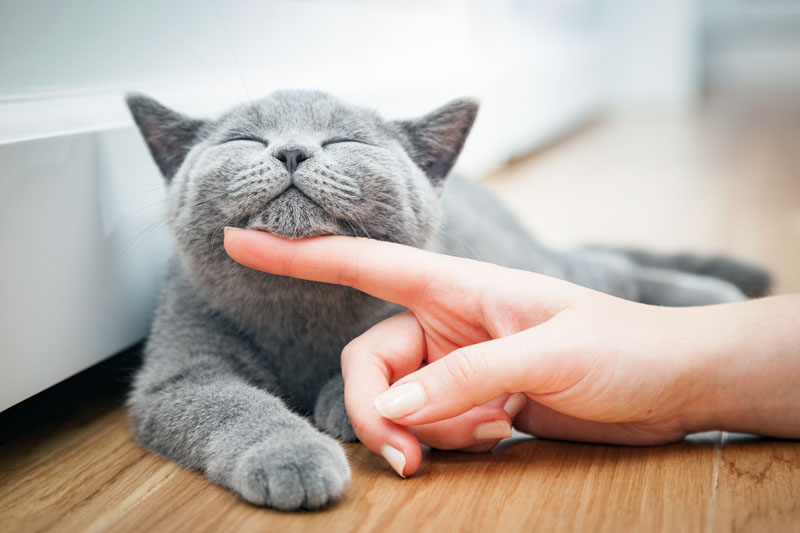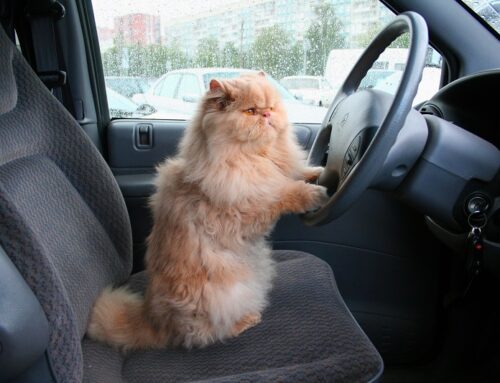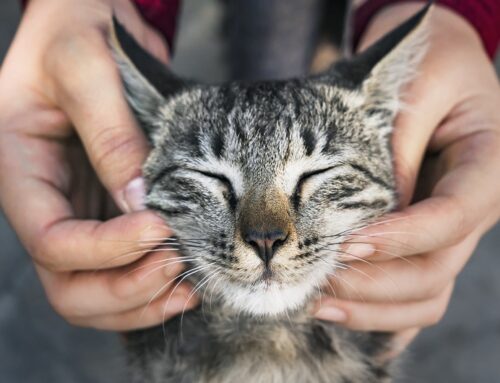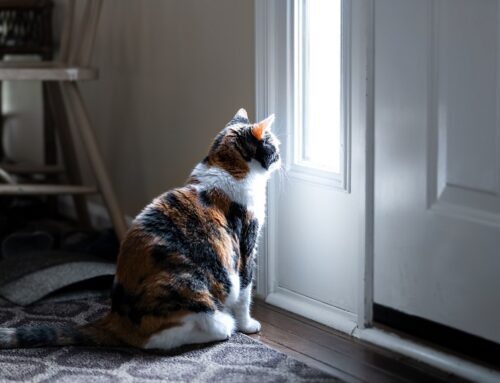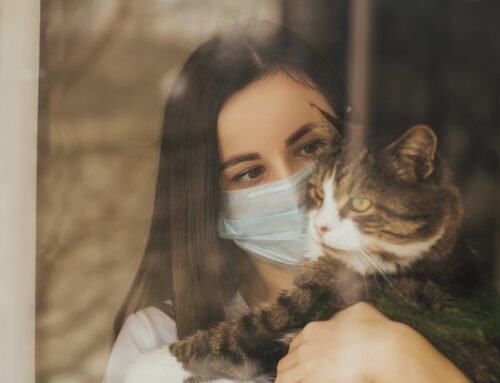Last month, we discussed the hierarchy of needs for cats. This month, we will look at ways we can meet these needs for our feline family members. Remember: meeting all of these needs should lead to maximum happiness for your kitty!
The first (or base) layer of needs for cats is “Physiological and Safety”, or basically the cat’s territory. While this may seem to be the easiest need to meet, it can become more difficult with multiple cats. As you may recall, cats do not naturally share well with other cats automatically. This means each cat should have its own access to resources such as food and water bowls, litter boxes, toys, scratchers, cat trees, etc. This may also mean that some cats will need their own space for resources; these are cats that tend to hide or run away from other cats in the household. The general rule of thumb for litter boxes is to have 1 more box than number of cats. A great resource for helping setup a cat-friendly environment is the Ohio State University indoor pet initiative (indoorpet.osu.edu/pet-owners).
The second level of needs is “Love and Belonging”, or affection. Again, this may seem like an easy need to meet; but it can become more complicated with multiple cats, busy work schedules, or life-changing events, such as going back to school, having a baby, etc. Any change in the cat’s environment can cause stress, and this can include an owner suddenly not being around as much anymore or something that takes the owner’s attention away from the cat. No matter what changes in your life, always try to include daily affection for your cat; this may be petting, grooming/brushing or play. Cats will typically play for about 10 minutes, so it can be easy to fit in a quick play session before or after work, followed by a treat. The treat acts as a positive reward for play, lets the cat know playtime is over, and allows the cat to look forward to the next play session. This may also stimulate the cat to go and play with other toys on its own.
The third level of need is “Esteem”, or self-confidence. This level is easy to meet for most kittens and cats that already have good esteem. These are the cats that instantly explore a new environment. However, this level can become difficult and frustrating (for people) in cats that have little or no self-confidence. Such cats run and hide from strangers and loud noises, or they are afraid to cross open areas. For these cats, make sure that the first two levels of needs are being met. Encourage play, away from other cats if needed; a cat that is comfortable in its environment will want to play on its own. It may take trial-and-error to find a toy that cats with little self-esteem will like. Some cats like laser pointers, toys that roll or make noise, or things that mimic a bird flying. These cats need something to stimulate their interest and will usually play best with something that imitates moving prey. Anxious cats may also benefit from anti-anxiety supplements, such as Zylkene or Soliquin, which can make it easier for them to relax in the environment and be more likely to play and explore. Both of these supplements are derived from milk proteins that cause relaxation and a feeling of calm (like nursing kittens). Adult cats don’t digest milk well and don’t get these effects from just drinking milk.
The top of the pyramid is the need of “Self-Actualization,” or problem-solving. This can be the most difficult level to meet as cats use problem-solving the most when hunting. Most people don’t want small rodents running around their house for the purpose of allowing their cat to hunt! What we can do is try to mimic the mental stimulation and gratification from “catching” a meal. This is where treat toys and food puzzles can work very well. While food puzzles used to be limited to dry food, today there are lots of food puzzles for canned diets. A great website is foodpuzzlesforcats.com, as they offer puzzles for sale and how-to’s for homemade puzzles. Another option, instead of feeding a set out meal, is to hide small food portions around the house for the cat to find. If you consider doing this, it’s best to periodically change food locations, as the cat will just memorize the locations and no longer have to search.
We hope this article will be a good starting-point for enriching our kitty friends’ lives. As always, if you have any specific concerns about your cat, please contact Cats on Broadway Veterinary Hospital so that we can address the problem and work on a solution. In some cases, cats that aren’t “happy” at home may have an underlying medical problem that needs to be addressed!



